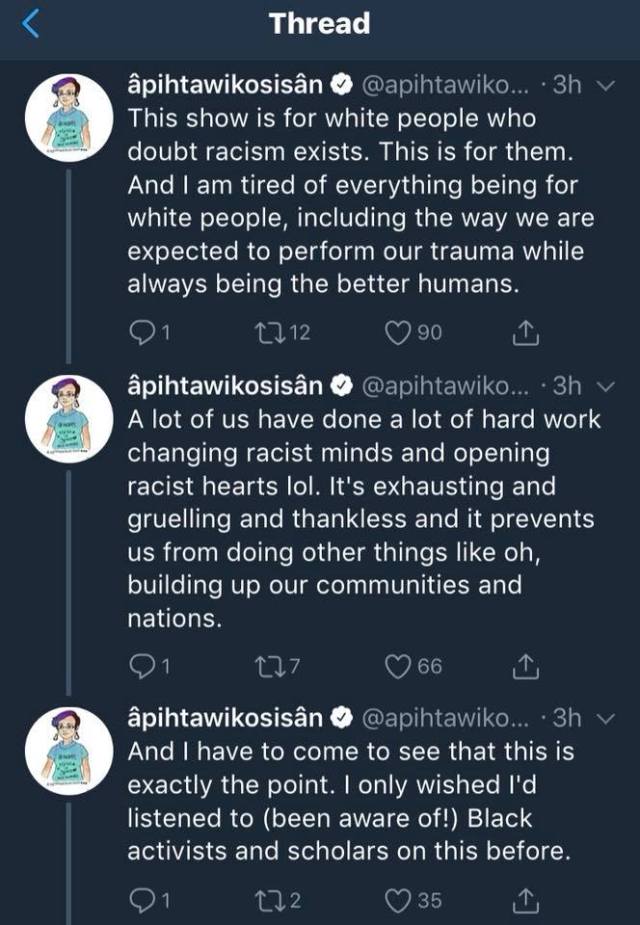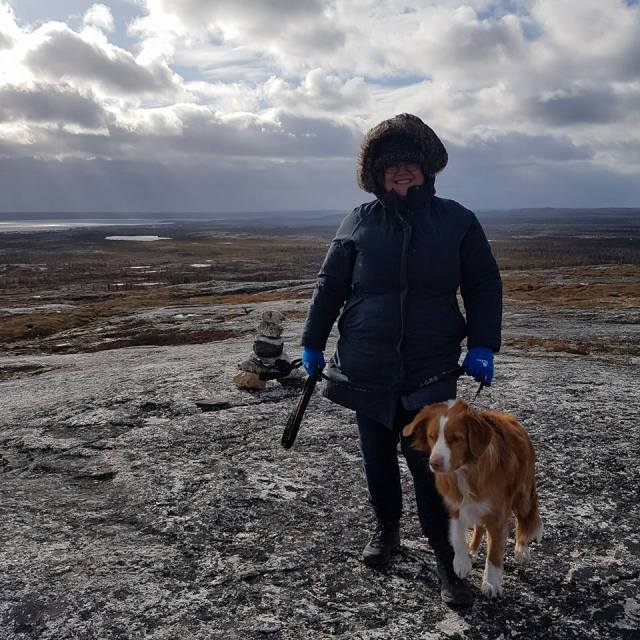
Let me begin by saying I write this with the full understanding that I have much more to learn when it comes to reconciliation, and cannot speak for Indigenous peoples as a whole, their cultures or their experiences. What I can do is share what I have learned so far in my work and relationships with those most intimately and personally affected by colonialism, as I believe that is my responsibility in this journey called reconciliation. Not to speak for them, but to share what I have learned to teach others, so that this burden does not need to be taken up by them unless they wish it. When it comes to breaking down the system that oppressed/s so many, Canadians have a much bigger role to play than we are currently.
https://twitter.com/DaveAlexRoberts/status/1040420259252068352
I want to talk about First Contact.
At first glance, without seeing the show, and without yet having heard the voices of those wiser than I, I saw this show as intriguing. I shared the advertisements, thinking wouldn’t this be a great way to start talking about issues we are ignoring as a country?
However, as I listened to the trailer for about the third time I thought, hmm. This is awkward and weird, putting ignorance and racism on a soap box yet again. It made me feel uncomfortable with the initial excitement I had. I started to have doubts. Yet, it was drawing a crowd, the posting continued on social media. And I still planned on watching.
People were talking about it, talking about how important it was to see peoples’ opinions be changed. My timeline and my Twitter feed were blowing up with anticipation for its release. One of my colleagues, an Inuk in Nunavik, stated “YES! This! I always wished people would see our lives, come be in our life and realize what it is like!” (shared with permission) For her, it was an opportunity to see and experience a validation of shaking up peoples’ misconceptions and falsehoods. An opportunity to clear the slate of all the negative and hateful beliefs she had heard in her life. I also saw posts from other Inuit expressing their desire to learn more about themselves too through this show. First Nation youth I had worked with over the years were talking about the show, how they had experienced things from people like those in the trailer, and how they were looking forward to seeing them ‘finally get it’.
And then, it aired. And then, the deeper, more complicated conversation began.


I have spent several evenings reading the reactions, tweets, blogs and commentary from leading advocates, knowledge keepers and story tellers from First Nation, Metis and Inuit communities after the airing of the first episode of First Contact. Interestingly, many Inuit friends who shared initial excitement still felt this way, but also felt conflicted and struggled with hearing the participants views and commentary. Some too expressed the exhaustion of always needing to be the voice of ‘education’ on issues of colonialism, where it feels like being a broken record, on repeat, for the well-being and understanding of someone who doesn’t bother to listen anyway. Some of my First Nation friends, on the other hand, were much more vocal about their feelings towards this program, and movements like it that continually put the pressure and burden of explaining and educating experience on Indigenous peoples, without first including the caveat that it is NOT up to them to educate and inform if they do not wish to, nor can we expect as a society that the responsibility for fixing the broken and harmful system of colonialism to be on the shoulders of Indigenous peoples. The onus, as I have seen shared many times now, is on the settlers/the colonizers, the creators of that system, and their offspring, to fix it.
I have also seen a few comments on some Indigenous friends’ posts that say “but we want to create a space for Indigenous voices to share their culture, and how can we do that if it’s only ever white people talking?”
To this I say, that’s an entirely other conversation. Yes, we need to invest in and support Indigenous authors, speakers, artists, media creators of films, podcasts, etc. Their stories and culture need more space in our society as a whole, and if the controversies of this show help create that space, that’s amazing. But do not mistake the sharing of culture and stories for reconciliation. Space for their voices is the least we can do as a society after years of repression and genocide. Yet if you think that’s all we must do, you are not paying attention. The work that must be done is learning, listening, sharing and actively working towards dismantling the systems that to this day leave our Indigenous communities in a worse state. Reconciliation is showing up in support at protests about under funding Indigenous children’s education, health care, and social services. It’s pressuring your government to act, on these issues, and the many more that affect reserves and Inuit communities like housing inequality, and access to clean drinking water. It’s about holding those in authority and with the power to change these policies accountable with your vote and/or wallet. It’s reaching out to local First Nations or Inuit communities to ask what you could be doing to help advocate, letter write, or promote/support their work. It’s recognizing that ‘Indigenous Issues’ like the environmental impacts of a pipeline or the passing of more lax environmental impact assessments are not ‘Indigenous issues’ but things that affect all of us, and should be a fight we all participate in. Reconciliation is having every day, difficult conversations with your non-Indigenous friends about the racist t-shirt they are wearing, the joke they told, or the meme they shared. It’s also about recognizing, sharing and celebrating the amazing contributions Indigenous people have had on our society, and continue to have every day. It’s about recognizing and acknowledging the deep hurts that continue to happen due to inequalities, but also supporting and acknowledging the hard advocacy and activism Indigenous folks have been doing since Canada ‘became’ a country. I would much rather have watched a show examining all the work Indigenous peoples do towards reconciliation, education, and advocacy, than hear yet again the prejudices of those that can’t bother to educate themselves.
So, First Contact. I am not saying you shouldn’t watch it. I am not saying you should. But I would like to encourage anyone who was excited or intrigued by this show to listen to the voices of those who are expressing to us why this ISN’T the way we should be working through reconciliation, that these are the wrong voices being given a platform (by this I mean specifically the participants, not those attempting to teach them), and that there are so many more amazing resources that share Indigenous perspectives on these issues without also putting the burden on them to educate a non-Indigenous participant in a bad reality show.
I would also like anyone who has resources, documentaries, books, podcasts to recommend that would help those who want to learn more begin their journey besides this show to please share!
Here are a few I would recommend that focus on current issues or experiences/events/policies that continue to deeply affect communities and nations today:
- Where are the Children (virtual exhibit)
- We Were Children (documentary film)
- Justice Murray Sinclair on Reconciliation (short interview)
- Colonization Road (documentary film)
- Angry Inuk (documentary film)
- Red Man Laughing (podcast series)
- The Right to be Cold by Sheila Watt-Cloutier (book)
- Indigenous Writes: A guide to First Nations, Metis and Inuit Issues in Canada by Chelsea Vowel (book)




























